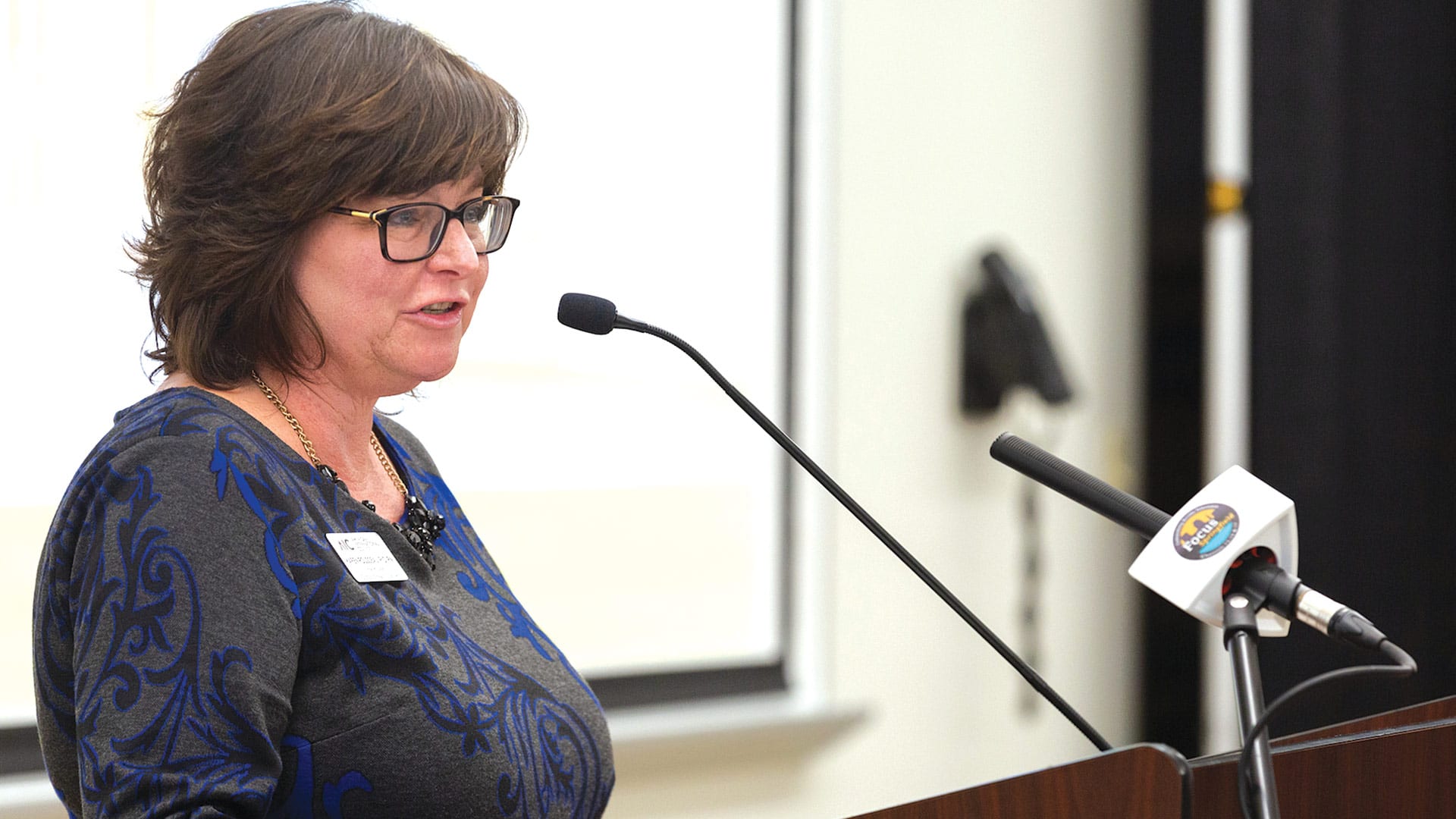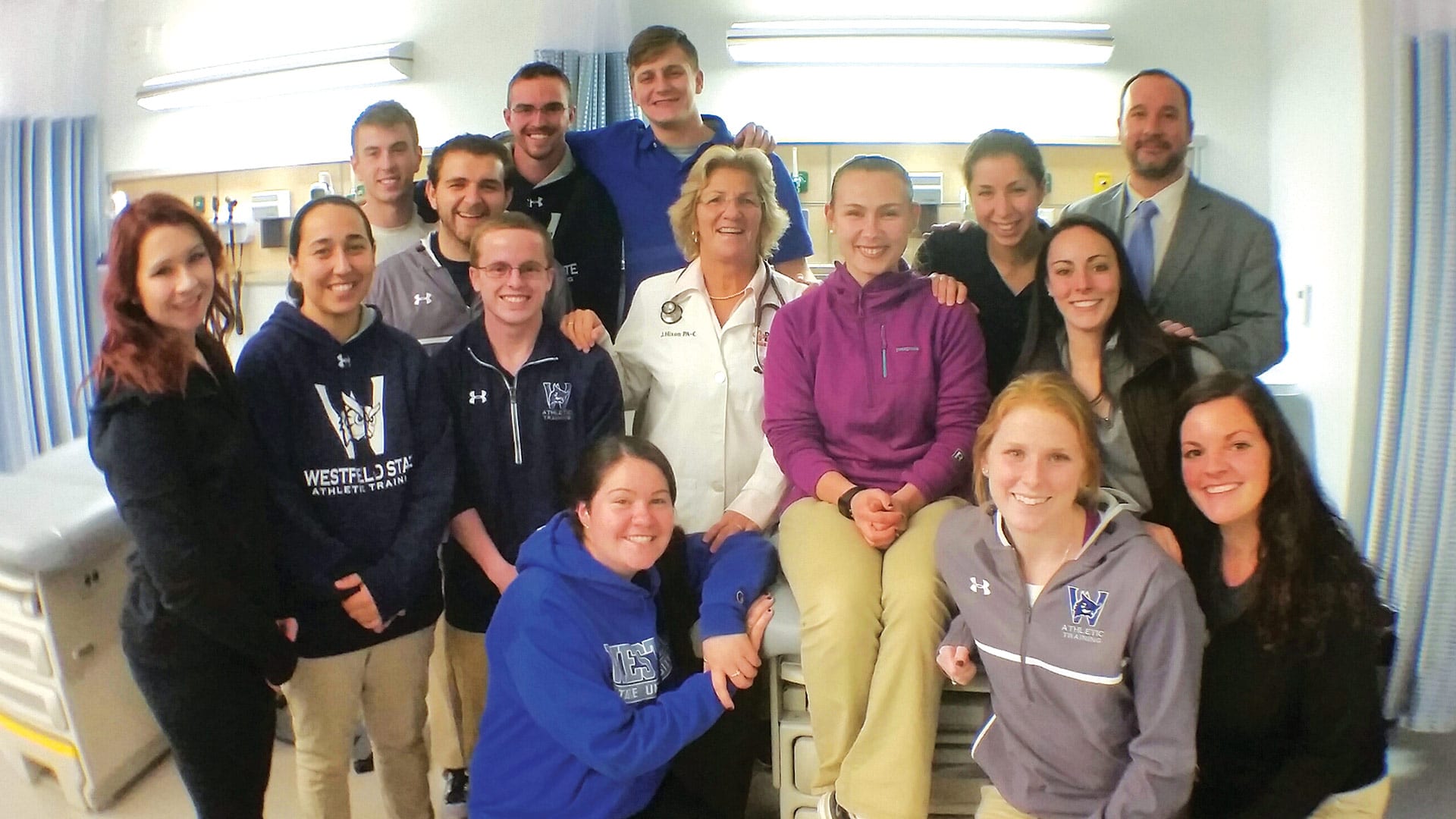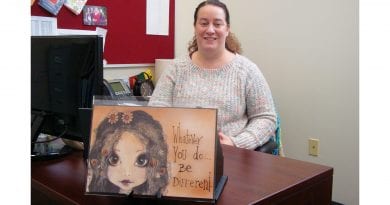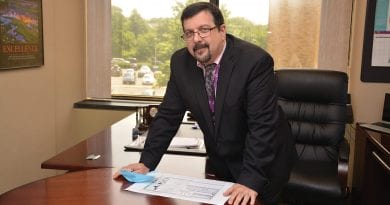College Health Programs Tackle Challenge of Hands-on Learning
Face to Face
Weeks before COVID-19 shut down Massachusetts, Jennifer Hixon could read the signs.
“In February, I sat with my faculty, and we did not like the look of what was coming, so we planned a transition to virtual learning so we would be able to pivot to virtual education,” said Hixon, director of the graduate program in Health Sciences and chair of undergraduate Health Sciences at Westfield State University. “That went pretty well. For the classroom portion, we did a lot of Zoom teaching so students really got a chance to see us, talk to us in person, every single day.”
It was tougher for students already stepping into clinical rotations at hospitals and smaller practices; they found those experiences shutting down in March, though many have since returned, under strict safety protocols and using personal protective equipment (PPP).
That experience is a reminder that, while much college education can be delivered online — and will be this fall at many area institutions — health education requires at least some element of hands-on training. And that’s the challenge for the area schools that deliver such programs.
“We will be back on campus in September; we changed the configuration of all our classrooms and made sure we’ve provided all the sanitization equipment we need,” Hixon said, “so we can teach in an environment that’s as safe as possible.
“The faculty in my department — and all health sciences — know how to take care of themselves,” she continued. “These are healthcare providers, so they can really create an environment that is as safe as possible — understanding nothing is completely safe, of course, but as safe as possible for students.”

Hands-on learning and lab work will begin in September, with guidelines for PPE use and social distancing; for instance, a lab with 30 students will now take place over three sessions with about 10 students each.
“We are looking forward to it, and so are the students,” Hixon told HCN. “We have worked really hard to create a safe work environment.”
Karen Rousseau, dean of the School of Health Sciences at American International College, said many of AIC’s health programs involve teaching skills that involve hands-on or face-to-face interaction. “While most courses at AIC will be remote, there are courses that involve some face-to-face classwork, in particular nursing, PT, OT, and a little bit in exercise science,” she noted.
To prepare for that, “we’ve put into place some guidelines for maintaining student safety and reducing exposure,” Rousseau explained. “Students will wear masks whenever they’re in the building, with additional PPE to enter the classroom. And we’re running smaller sections of those classes.”
Faculty will try to make the most efficient use of face-to-face class time as well, she added. “There may be things students can prepare for remotely, so when they come in, they’re focused on activities that involve face-to-face interactions for a shorter time.”
In addition, professors have also identified lessons and skills that require need face-to-face interaction for student progress, and moved those earlier in September to anticipate the potential for another state shutdown if the pandemic spikes in the fall, as well as managing students’ field work and clinical experiences to ensure they get the training they need.
In short, COVID-19 is still a moving target in many ways, and healthcare educators must balance safety with the fact that some skills simply can’t be learned — not completely, anyway — through a screen.

Safe and Sound
Rousseau, like Hixon, remembers the scramble to move everything online in the spring.
“It was such a fast change. But the faculty rose to the occasion and found really creative ways to simulate things in the classroom, and were able to simulate experiences very efficiently and effectively,” she told HCN, adding that a few students who would have graduated are returning for face-to-face training so they feel comfortable stepping into the field.
“We have outside accreditors for those programs, so we have to meet accreditation standards and show competency,” she said. “That’s the goal — to make sure the student shows competence when working with clients in varied healthcare facilities. The ultimate focus is to educate safe practitioners. We took that as the primary goal.”
Throughout Western Mass., about 20 colleges and universities have developed strategies for how classes will be delivered this fall, from online-only to mostly on-campus, with a number adopting a hybrid approach blending online and in-class instruction, with students able to shift between the two.
Yet, even the online-only schools (most community colleges fall into this category) have to make an exception for health programs.
At Springfield Technical Community College (STCC), for example, some programs in the School of Health and Patient Simulation (SHPS) will include low-density, on-campus labs that will include necessary social distancing, PPE, and sanitizing protocols.
For the fall semester, SHPS will deliver courses and programs using a combination of low-density instruction and online, with gathering size set in accordance with state and federal social distancing guidelines. Students in most other programs will learn at home — at least for now.
“STCC has no intention of becoming a fully online institution,” said Geraldine de Berly, vice president of Academic Affairs. “COVID-19 has forced the college to adjust, and we do hope in the future to return to the robust utilization of campus facilities which include our labs, specialized equipment, unique technologies, and the rewarding in-person experiences STCC faculty generate with and for students.”
We will be back on campus in September; we changed the configuration of all our classrooms and made sure we’ve provided all the sanitization equipment we need, so we can teach in an environment that’s as safe as possible.”
Most programs at UMass will be delivered remotely as well this fall, although students have the option to live on campus. Still, some courses — including health programs that lead to licensure or accreditation in the field — will require some face-to-face instruction.
“About 14% of our student body will be enrolled in those types of courses. The rest will be fully remote,” said Carol Barr, senior vice provost for Undergraduate Education. To ensure social distancing, some face-to-face courses may have students attending on alternate days and learning remotely on other days, as determined by the instructor.
Sticking with the Plan
Developing the right strategy for its student population has been a daunting challenge for each area college, to say the least.
“I know faculty have been working all summer, when it would normally be their downtime, working on individual programs to keep students moving forward in their educational experiences as much as possible,” Rousseau said.
“We’ve had some challenges in field work and clinical placements, because healthcare has not able to bring students in,” she went on, “but that’s gradually improving as time goes on, and we’re hoping that continues, and there are no further outbreaks or restrictions. That was a big challenge for our program and for many programs across the country.”
After all, Hixon added, “there are some spectacular virtual simulations, but it’s just not the same. We really want students to get a chance to interact with a real person.”
Her students are excited to do so, she added, and enrollment has been solid in WSU’s health programs. “Students entering as undergrads want to get in — they want to become helpers in this terrible pandemic. It’s so impressive to see someone 17 or 18 years old who’s ready to jump in. There’s a pride that’s developed in these healthcare careers.”
And students understand, Rousseau said, that they’ve chosen a field where it’s impossible to be totally safe, even as educators strive to create as safe a learning environment as possible.
“We’re educating future healthcare providers who will be working with clients in the field,” she told HCN. “Things like COVID are reality within healthcare. It’s certainly not something I’ve experienced in my career, but certainly, the idea of outbreaks of illness is. And we still need to provide care to people.”
Rousseau said the pandemic has certainly drawn attention to what essential healthcare workers do for the public, while advancing new modes of care delivery, like telehealth, and raising the profile of public health as a profession.
“What we think about in relation to healthcare and how it’s delivered is evolving,” she said. “This is a time for creative ideas and innovation, and that will only continue.”
Those trends will only be boosted by an influx of new providers graduating from colleges and universities. The challenge is training up those students — up close when necessary — at a time when communicating from a distance is still largely the order of the day.




